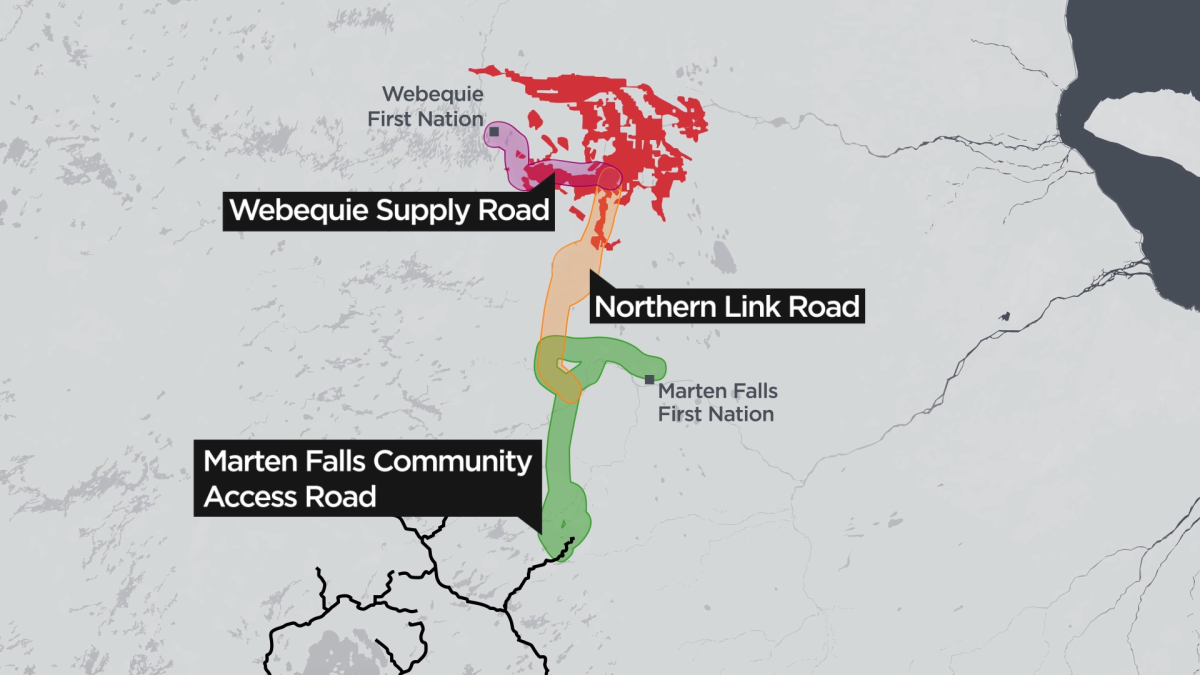The lawyer representing a number of First Nations communities opposed to the Ford government’s plans for the Ring of Fire is cautioning that the province’s long-term electric vehicle battery manufacturing strategy might be a “fool’s errand.”

Premier Doug Ford agreed to enter into a pact with the federal government to offer hefty subsidies to companies that choose to build lithium-ion batteries for electric vehicles in Ontario, seen as the next frontier in the province’s auto manufacturing strategy.
Both governments have poured billions into packages to tempt car makers to set up in the province,
Already, Ontario has agreed to give German automaker Volkswagen and Amsterdam-based automaker Stellantis up to $10 billion in tax breaks for the production of millions of batteries set to come off the assembly lines over the next decade.
In order to scale up the province’s battery manufacturing presence, however, the Ford government might need to unlock mining in a key region in northern Ontario, known as the Ring of Fire, which contains deposits of minerals needed to build electric vehicle batteries.
Opening the area up for critical mineral mining means a massive road-building effort, new studies and convincing local First Nations communities to support the idea.
Flavio Volpe, president of the Autoparts Manufacturers Association, believes Stellantis and Volkswagen finally give the region an “anchor customer” to justify the infrastructure needed to access the mineral deposits.
“Now, those mining interests in Northern Ontario have two plants that are going to make, between them, something around 1.5 million batteries per year for 20, 30 years,” Volpe told Global News. “And so now that business model starts to look a little better.”
Building a dedicated road to the Ring of Fire has been a decades-long challenge leading to confrontations between prospectors, governments and First Nations over the environmental concerns around drilling and mining potentially sensitive lands. Having an anchor customer and accelerated EV battery plans hasn’t changed the equation.

Get breaking National news
It has long been a key topic of conversation between Ford and Prime Minister Justin Trudeau. The pair discussed the Ring of Fire during four successive meetings at the end of 2022, and it topped the agenda on three occasions.
While the Ford government has partnered with two First Nations — Marten Falls First Nation and Webequie First Nation — to conduct environmental assessments for an all-season road, a number of Treaty 9 First Nations have objected to the developments unless they are given a better understanding of the project’s impact on the environment.
“All we’re saying right now is: don’t do anything until we understand if that might happen,” Kate Kempton, senior counsel for a number of Treaty Nine First Nations, told Global News.
Canada’s peatlands are among the largest in the world — making up around a quarter of the world’s total supply.
Together, they store more carbon than the Amazon rainforest and amount to the largest land carbon stock in the world. The latest research estimates Canada is responsible for 150 billion tonnes of carbon sequestered underground — the equivalent to 11 years of current global greenhouse gas emissions.
Critics of the Ford government’s plans fear that mining in the Ring of Fire could release some of that carbon and render the benefits of electric vehicles moot.
“The purpose of electrifying is to save us from ourselves, to reduce the growing catastrophe of climate change by getting off fossil fuels,” Kempton argued. “If, by getting at those minerals, we make climate change worse by digging up the peatlands that store trillions of tonnes of carbon … then that’s a case of cutting off our nose to spite our face.”
Recently, the Treaty 9 First Nations launched a lawsuit against Ontario and Ottawa arguing they must be equal partners in any development on their territories. The groups alleged they had not been properly consulted.
Mark Bell, a councillor from Aroland First Nation, said his community and others aren’t on board with the Ring of Fire plan as it stands.
“We hear so much about building mines and roads and this and that, but they don’t have our community’s permission,” he said. “There’s been zero consultation on these types of projects.”
Both the government of Ontario and Canada filed a notice in recent days that they intend to defend the legal action, setting the stage for a protracted court battle over unlocking the country’s economic future.
“The Treaty 9 case is not an accident,” Kempton said. “It’s because of the pressure that the Ford government has been bringing to bear over the last several years threatening to bulldoze it without First Nations consent.”
Kempton said the group is willing to set up a table with both the federal and provincial governments to negotiate a resolution and gain a clear understanding of the impacts of the mining projects and road construction.
Kempton warned that the province might be moving too fast in its quest to sign new EV battery manufacturing deals.
“The jam to get into the Ring of Fire right now without knowing the implications is a fool’s errand.”
— with files from The Canadian Press









Comments